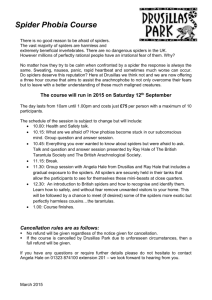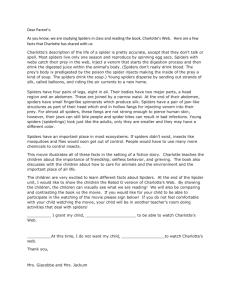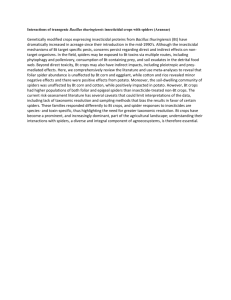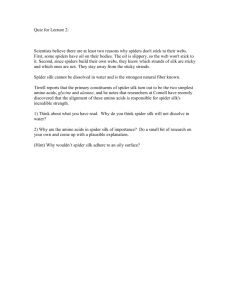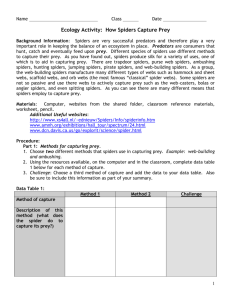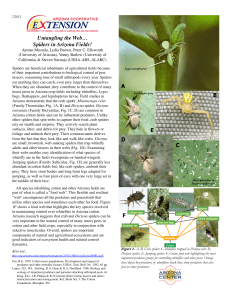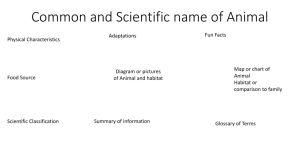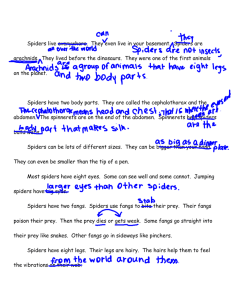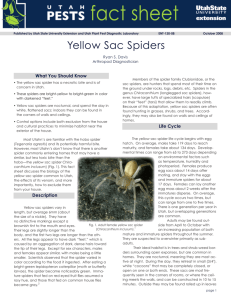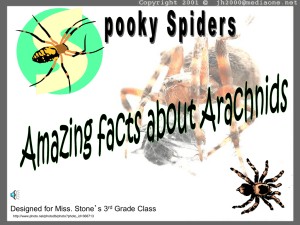10969.doc
advertisement
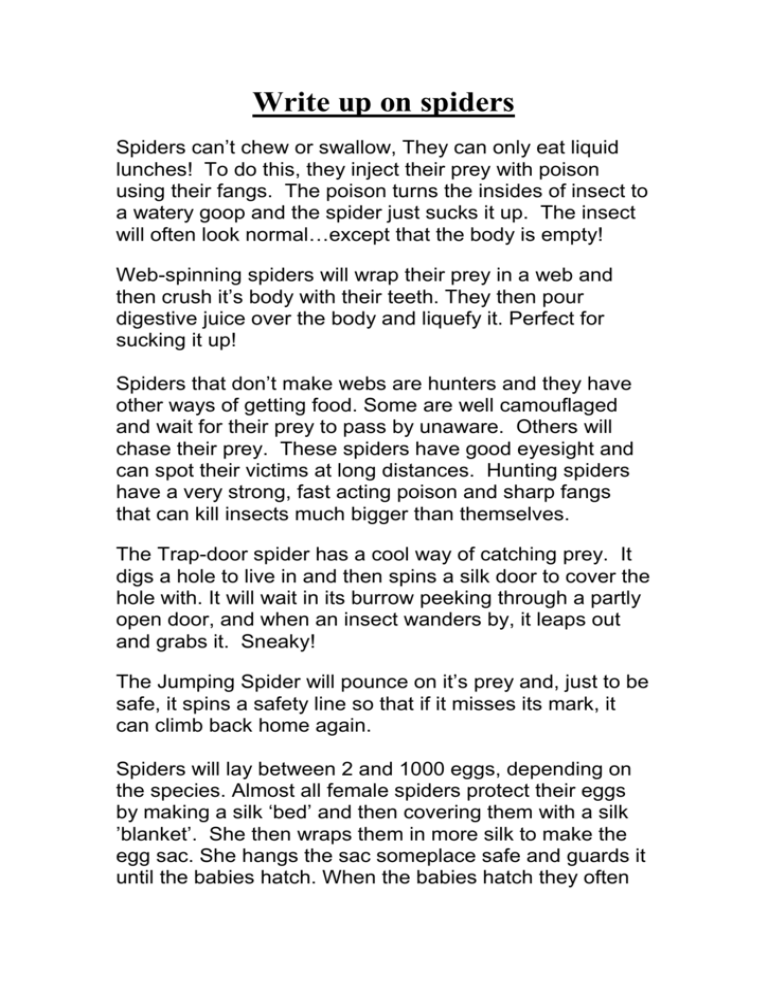
Write up on spiders Spiders can’t chew or swallow, They can only eat liquid lunches! To do this, they inject their prey with poison using their fangs. The poison turns the insides of insect to a watery goop and the spider just sucks it up. The insect will often look normal…except that the body is empty! Web-spinning spiders will wrap their prey in a web and then crush it’s body with their teeth. They then pour digestive juice over the body and liquefy it. Perfect for sucking it up! Spiders that don’t make webs are hunters and they have other ways of getting food. Some are well camouflaged and wait for their prey to pass by unaware. Others will chase their prey. These spiders have good eyesight and can spot their victims at long distances. Hunting spiders have a very strong, fast acting poison and sharp fangs that can kill insects much bigger than themselves. The Trap-door spider has a cool way of catching prey. It digs a hole to live in and then spins a silk door to cover the hole with. It will wait in its burrow peeking through a partly open door, and when an insect wanders by, it leaps out and grabs it. Sneaky! The Jumping Spider will pounce on it’s prey and, just to be safe, it spins a safety line so that if it misses its mark, it can climb back home again. Spiders will lay between 2 and 1000 eggs, depending on the species. Almost all female spiders protect their eggs by making a silk ‘bed’ and then covering them with a silk ’blanket’. She then wraps them in more silk to make the egg sac. She hangs the sac someplace safe and guards it until the babies hatch. When the babies hatch they often stay inside the sac to finish developing. Some mother’s stay until the spiderlings leave the sac, others will either leave or die before seeing their babies. All spiders have fangs! And* they almost all have venom in them. Lucky for us, most spider poison will not harm people because it is quite weak. Most spiders use their venom to paralyze its insect victim long enough to devour it. For other spiders, their poison is strong enough to kill their prey. Of course, this also comes in handy when being attacked by a predator. If courtship is successful, mating will begin. Male spiders do not produce ready-made packages of sperm to insert in the female by their genitals. They spin small sperm webs onto which they ejaculate and then transfer the sperm into syringe like structures on the tips of their pedipalps. This whole procedure is done before the courtship begins. During mating, the male will inject his sperm into the female's genital opening on the underside of her abdomen. Female spiders' reproductive tracts vary from species to species. Some have simple tubes to complex systems that include seminal receptacles in which sperm is stored and then released when the female is ready
